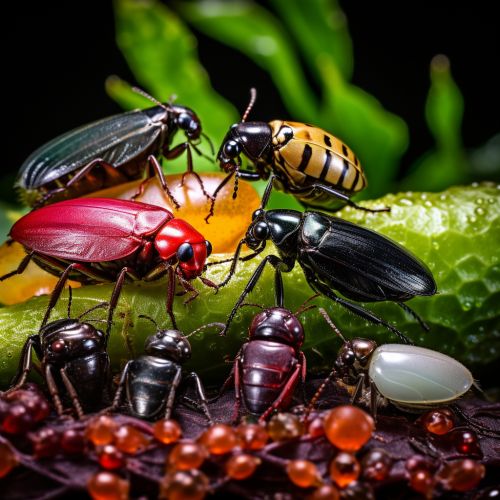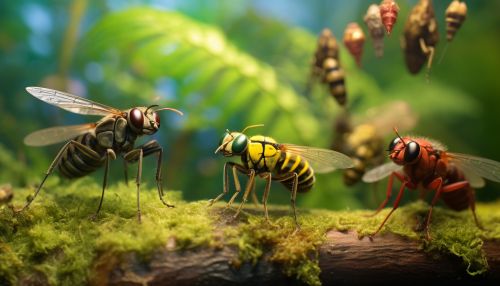Insect Growth Regulators
Introduction
Insect Growth Regulators (IGRs) are chemicals that inhibit the life cycle of insects. They are a type of pesticide, but unlike traditional pesticides, they do not kill insects outright. Instead, they disrupt the growth and development of insects, preventing them from reaching maturity and reproducing. IGRs are used in a variety of settings, including agriculture, public health, and residential pest control.
Types of Insect Growth Regulators
There are three main types of IGRs: juvenile hormone analogs (JHAs), chitin synthesis inhibitors (CSIs), and ecdysone agonists. Each type works in a different way to disrupt the growth and development of insects.
Juvenile Hormone Analogs
Juvenile hormone analogs (JHAs) are chemicals that mimic the action of juvenile hormones, which are naturally occurring hormones in insects that regulate growth and development. By mimicking these hormones, JHAs prevent insects from maturing into adults. Instead, the insects remain in a juvenile state, unable to reproduce.
Chitin Synthesis Inhibitors
Chitin synthesis inhibitors (CSIs) interfere with the production of chitin, a material that makes up the exoskeleton of insects. Without chitin, insects cannot molt, which is a necessary process for growth and development. As a result, insects exposed to CSIs are unable to grow and reproduce.
Ecdysone Agonists
Ecdysone agonists are chemicals that mimic the action of ecdysone, a hormone that triggers molting in insects. By mimicking this hormone, ecdysone agonists cause insects to molt prematurely, disrupting their growth and development.


Uses of Insect Growth Regulators
IGRs are used in a variety of settings to control insect populations. They are often used in combination with other types of pesticides for a more comprehensive approach to pest control.
Agriculture
In agriculture, IGRs are used to control pests that damage crops. They are particularly effective against insects that have multiple generations per year, as they can prevent these insects from reproducing and causing further damage.
Public Health
In the field of public health, IGRs are used to control insect vectors of disease. For example, they are used to control mosquito populations to prevent the spread of diseases like malaria and dengue fever.
Residential Pest Control
In residential settings, IGRs are used to control pests like cockroaches, fleas, and bed bugs. They are often used in combination with other types of pesticides for a more comprehensive approach to pest control.
Advantages and Disadvantages of Insect Growth Regulators
Like all pesticides, IGRs have both advantages and disadvantages. It is important to consider these factors when deciding whether to use IGRs for pest control.
Advantages
One of the main advantages of IGRs is that they are species-specific, meaning they only affect certain types of insects. This reduces the risk of harm to non-target organisms, including beneficial insects and other wildlife. IGRs are also less likely to cause resistance in insect populations compared to traditional pesticides, as they target a specific aspect of the insect's life cycle.
Disadvantages
One of the main disadvantages of IGRs is that they do not provide immediate results. Because they work by disrupting the growth and development of insects, it can take several days or even weeks to see a reduction in the insect population. Additionally, IGRs are generally more expensive than traditional pesticides.
Conclusion
Insect Growth Regulators are an important tool in pest control. By targeting the growth and development of insects, they provide a unique and effective method of controlling insect populations. However, like all pesticides, they should be used judiciously and in combination with other pest control methods to minimize their potential negative impacts.
